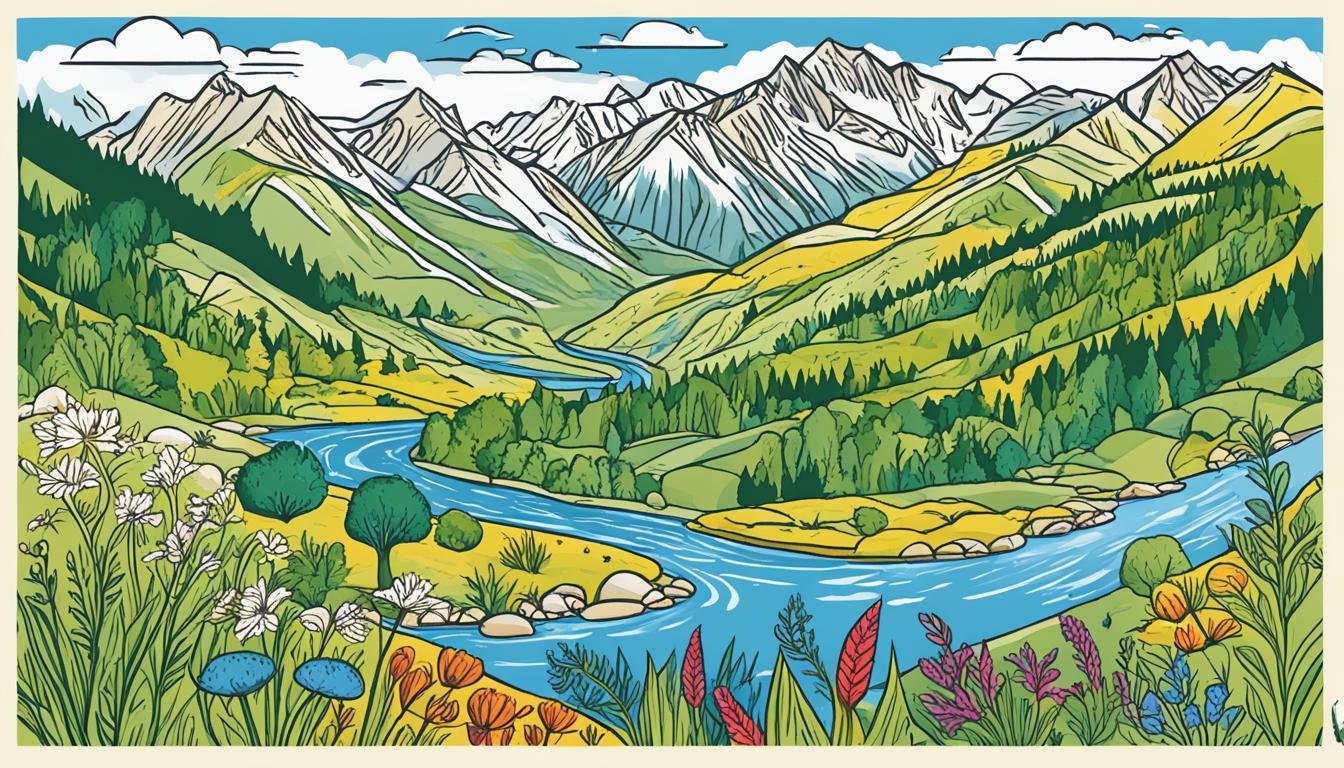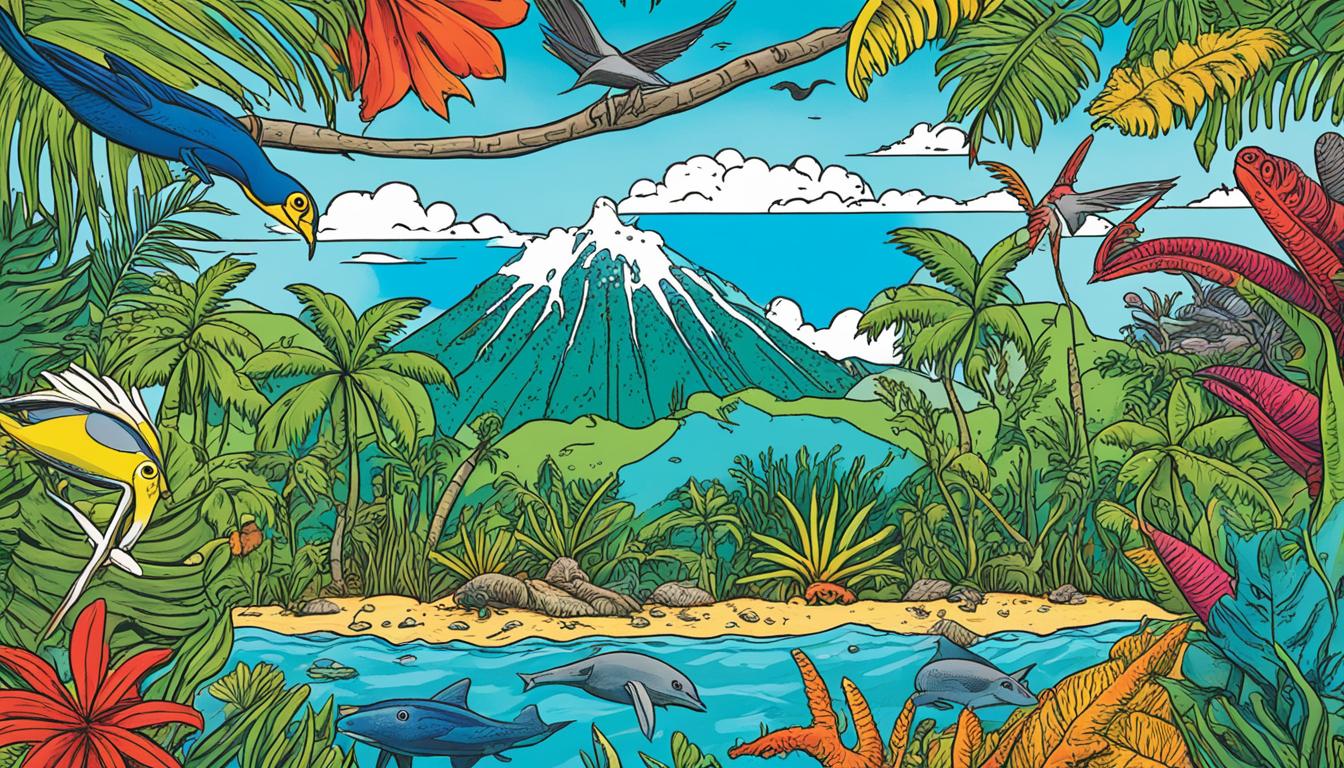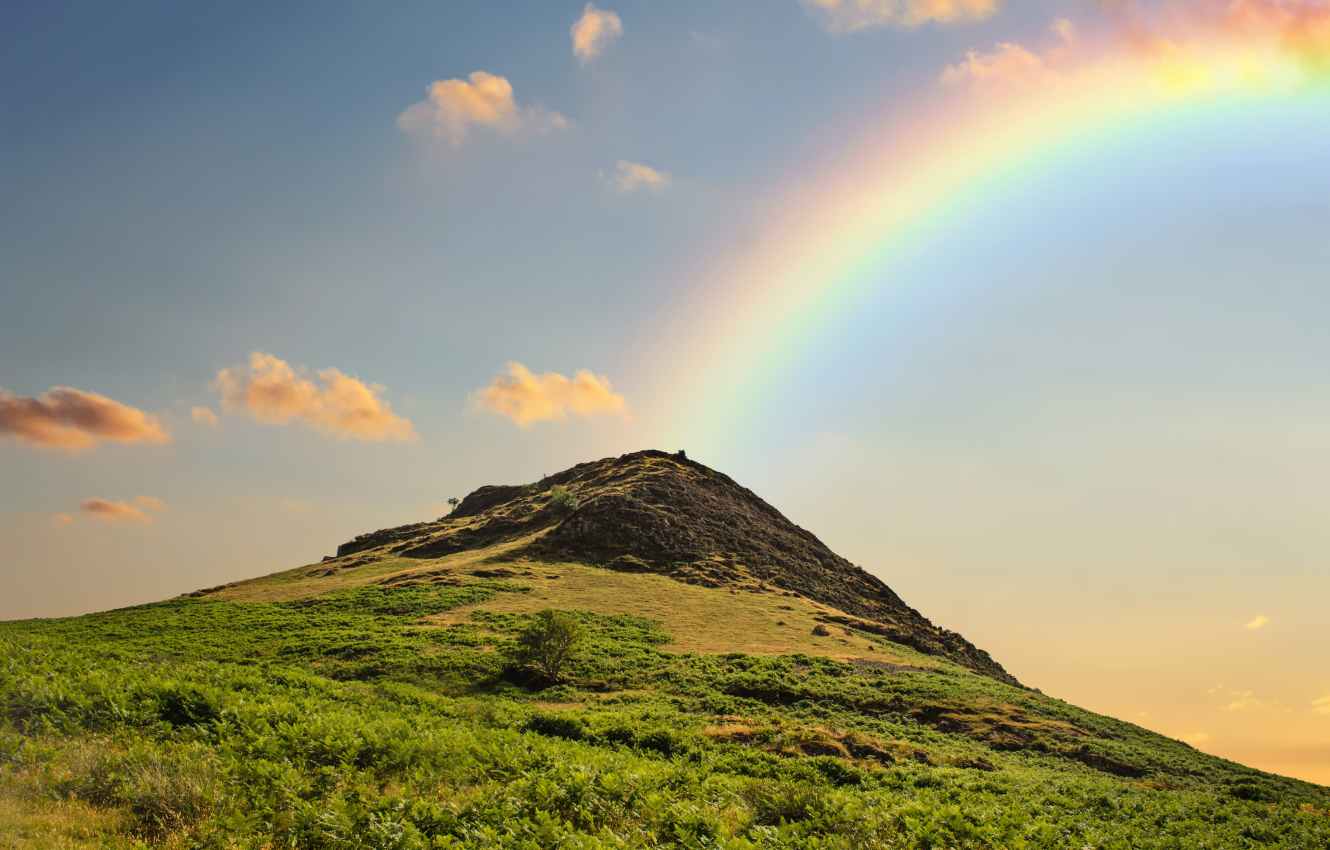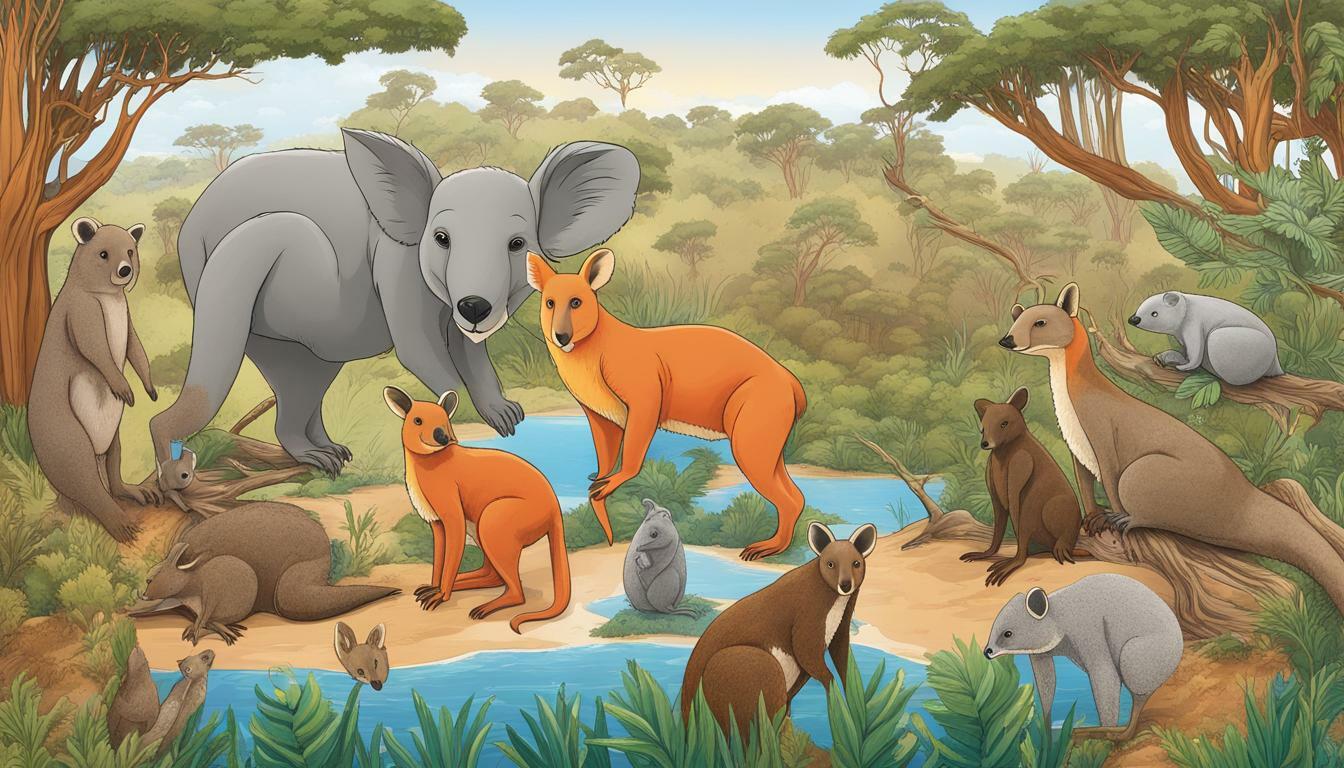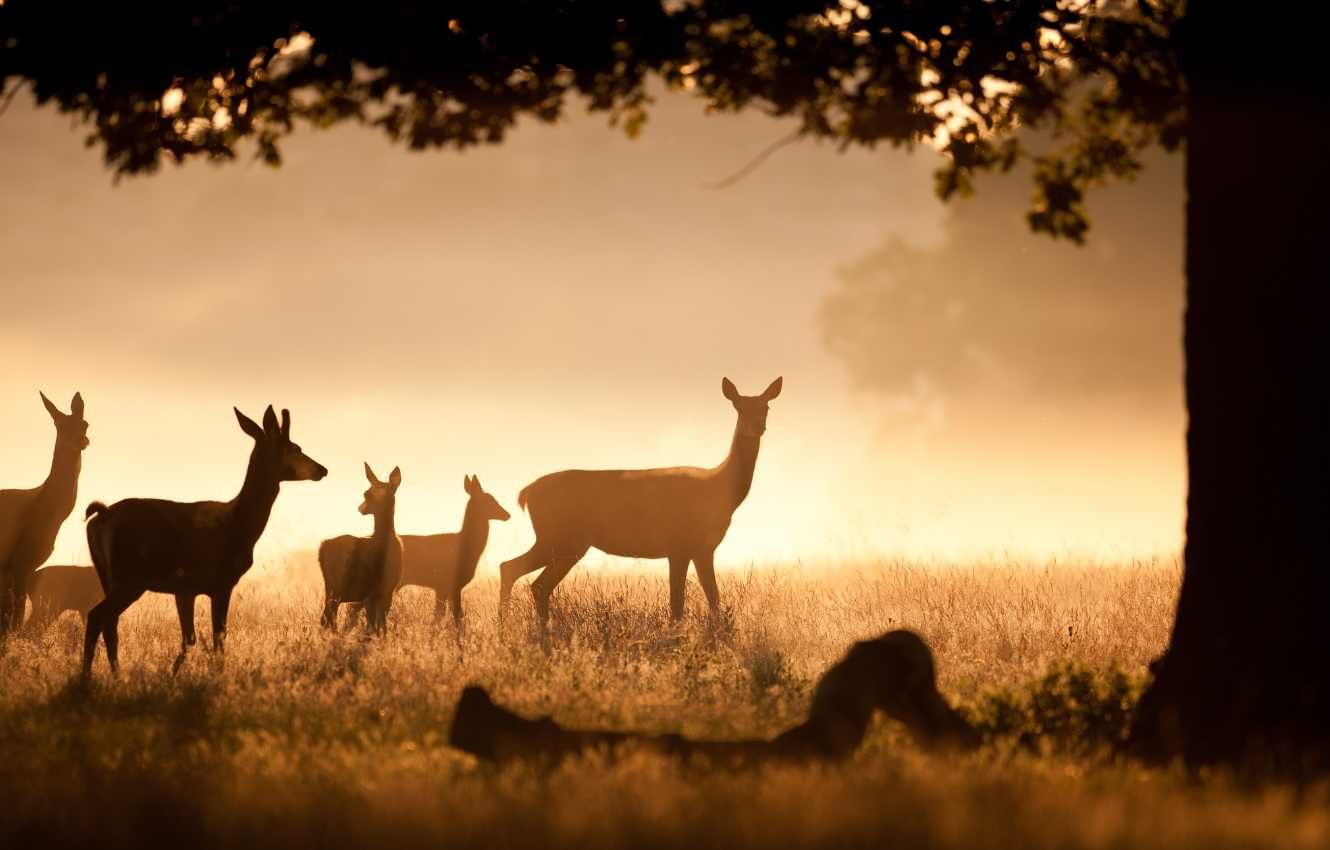Singapore Biodiversity: Animal and Plant Species and What Is Under Threat
Did you know that despite being one of the most densely populated countries globally, Singapore is home to a remarkable diversity of flora and fauna? With a land area of about 710 km2, this tropical island city-state harbors a vast range of native biodiversity, both on land and in its surrounding waters. What’s even more astonishing is that over the past 20 years, Singapore’s green cover has increased from 36% to 47% of the total land area, showcasing its commitment to biodiversity conservation and environmental sustainability.
Key Takeaways:
- Singapore is a densely populated country that contains significant biodiversity within its 22 nature sites, including 4 Nature Reserves and 18 Nature Areas.
- Comprehensive surveys in Singapore have recorded over 1,190 species of vascular plants, 44 species of mammals, 207 species of birds, and many other unique forms of wildlife.
- The main threats to Singapore’s biodiversity include habitat loss and degradation, pollution, poaching, and competition from invasive species.
- Conservation efforts in Singapore include the establishment of protected areas, reforestation programs, and the reintroduction of locally extinct species.
- The rapid urbanization of Singapore poses challenges to biodiversity conservation, but initiatives integrating green spaces into urban infrastructure are helping to preserve biodiversity.
Singapore’s Unique Flora and Fauna
Comprehensive surveys of the 2 Nature Reserves in Singapore have recorded an estimated 1,190 species of vascular plant species in these primary forest fragments, which provide refuge to 44 species of mammals, 207 species of birds, 72 species of reptiles, 25 species of amphibians, 33 species of freshwater fishes and 156 species of butterflies. Singapore’s marine biodiversity includes over 100 reef fish species, more than 200 species of sponges, and 255 species of hard corals, accounting for more than 25% of the world’s coral species.
In Singapore, the diverse flora and fauna thrive in various habitats, ranging from mangrove forests to coral reefs. The native species in Singapore’s nature reserves and protected areas play a vital role in maintaining the ecological balance of the region. These areas serve as crucial habitats for a wide variety of wildlife, fostering biodiversity conservation efforts.
“The wealth of biodiversity found in Singapore demonstrates the importance of preserving and protecting our natural heritage. From the rich rainforests to the vibrant marine ecosystems, each species contributes to the overall health and sustainability of our environment.”
The native plant species in Singapore’s nature reserves support a range of wildlife, providing food, shelter, and breeding grounds for numerous species. The lush greenery forms a lifeline for mammals, birds, reptiles, amphibians, and insects, ensuring the survival of unique and endangered species.
Singapore’s marine biodiversity is equally remarkable. The coral reefs that surround the island are home to a diverse array of marine life, including colorful fishes, sponges, and corals. The coral reefs in Singapore are internationally recognized for their ecological significance and serve as a vital nursery and feeding ground for countless marine species.
The Importance of Singapore’s Native Species
The presence of native species in Singapore’s ecosystems is essential for maintaining ecological balance. Native plants provide essential habitats and food sources for native animals, ensuring their survival. They are adapted to the local climate and environmental conditions, making them more resilient to threats such as pests and diseases. Native species also play a crucial role in pollination, seed dispersal, and nutrient cycling.
Protecting and preserving Singapore’s unique flora and fauna is not just vital for the conservation of biodiversity but also contributes to the overall well-being of the nation. Nature reserves and protected areas serve as recreational spaces, promoting eco-tourism and providing opportunities for nature-based education and research.
| Species | Number of Species |
|---|---|
| Plants | 1,190 |
| Mammals | 44 |
| Birds | 207 |
| Reptiles | 72 |
| Amphibians | 25 |
| Freshwater Fishes | 33 |
| Butterflies | 156 |
| Reef Fishes | 100+ |
| Sponges | 200+ |
| Hard Corals | 255 |
Threats to Singapore’s Biodiversity
Singapore’s rich biodiversity faces several significant threats that endanger the conservation efforts and the delicate balance of its ecosystems. The main threats include habitat loss and degradation, pollution, poaching, and competition from invasive species.
Habitat Loss and Degradation: One of the primary threats to Singapore’s biodiversity is habitat loss. Development pressures, such as land reclamation and degradation, have resulted in the reduction of important habitats like mangrove forests. These activities have led to the displacement of species that depend on these habitats, disrupting the natural balance and biodiversity.
Pollution: Pollution, particularly in urban areas, poses a significant threat to Singapore’s biodiversity. The discharge of pollutants into rivers, streams, and coastal areas can have devastating effects on aquatic ecosystems and the organisms that rely on them. Pollution not only directly affects marine life but also indirectly impacts other species through the disruption of food chains and ecosystems.
Poaching: Illegal poaching of Singapore’s wildlife remains a persistent concern. Some species are poached for their valuable body parts, such as pangolins for their scales or certain bird species for the pet trade. Poaching contributes to the decline of these species and disrupts ecosystems by disturbing natural population dynamics.
Competition from Invasive Species: Invasive species, introduced to Singapore either accidentally or intentionally, pose a significant threat to native flora and fauna. These non-native species often outcompete native species for resources and disrupt the natural balance of ecosystems. The introduction of invasive plants, animals, and insects can cause significant damage to Singapore’s unique biodiversity.
To illustrate the scope of the threats, land reclamation along Singapore’s coast has led to a significant decrease in coral reef cover, estimated at around 60%. Coastal modifications and development continue to pose a threat to the remaining intertidal habitats.
Impact of Habitat Loss and Pollution
The impact of habitat loss and pollution on Singapore’s biodiversity cannot be underestimated. Not only do these threats endanger individual species, but they also have far-reaching consequences for entire ecosystems. The loss of key habitats like mangrove forests and coral reefs disrupts the interconnected web of life, affecting both terrestrial and marine species.
The loss of mangrove forests: Singapore’s remaining mangrove forests are vital habitats that support a diverse range of species, including unique species adapted to these ecosystems. The reduction of mangrove forests directly affects species such as the endangered smooth-coated otter and various bird species that rely on these habitats for nesting and foraging.
The decline of coral reefs: Coral reefs are biodiversity hotspots, providing a home for a wide variety of marine species. The decrease in coral reef cover due to land reclamation and pollution impacts the numerous species that depend on coral reefs for survival, including reef fish, sponges, and hard corals. The loss of coral reefs also affects the tourism industry, as these underwater ecosystems are major attractions for divers and snorkelers.
| Threats to Singapore’s Biodiversity | Impact |
|---|---|
| Habitat Loss and Degradation | Displacement of species, disruption of ecosystems |
| Pollution | Destruction of aquatic ecosystems, disruption of food chains |
| Poaching | Decline of species, disturbance of population dynamics |
| Competition from Invasive Species | Disruption of natural balance, outcompeting native species |
Efforts to address these threats and protect Singapore’s biodiversity are crucial for the sustainability and resilience of ecosystems and the species that depend on them.
Conservation Efforts in Singapore
Singapore has taken significant measures to protect and conserve its biodiversity through the establishment of 4 Nature Reserves and 18 Nature Areas. These designated areas, legally protected under the Trees and Parks Act, play a vital role in safeguarding the remaining primary forests and natural habitats in the country.
The National Parks Board (NParks) has implemented various initiatives to enhance biodiversity conservation and promote environmental sustainability. These efforts include:
- Reforestation programs to restore and expand forested areas
- Park connectors that link different green spaces, creating ecological corridors for wildlife
- The creation of managed habitats within urban areas to provide refuge for native species

One remarkable success of these conservation efforts is the reintroduction of the oriental pied hornbill. These birds were once locally extinct in Singapore but have now made a comeback, thanks to dedicated conservation measures. NParks collaborates with various stakeholders, including researchers, conservation organizations, and volunteers, to implement effective strategies for the protection and preservation of Singapore’s diverse flora and fauna.
Impact of Urbanization on Singapore’s Biodiversity
Rapid urbanization in Singapore has had a significant impact on the country’s biodiversity. The loss of natural habitats and the fragmentation of ecosystems have adversely affected a wide range of plant and animal species. As forests are converted into urban areas, several species have experienced decline and local extinctions due to habitat loss.
However, efforts have been made to integrate nature/green areas into urban infrastructure, which has created more terrestrial and aquatic habitats within built-up areas. This integration has played a crucial role in conserving biodiversity within the urban landscape. These efforts have helped to mitigate the negative effects of urban development and preserve Singapore’s eco-systems.
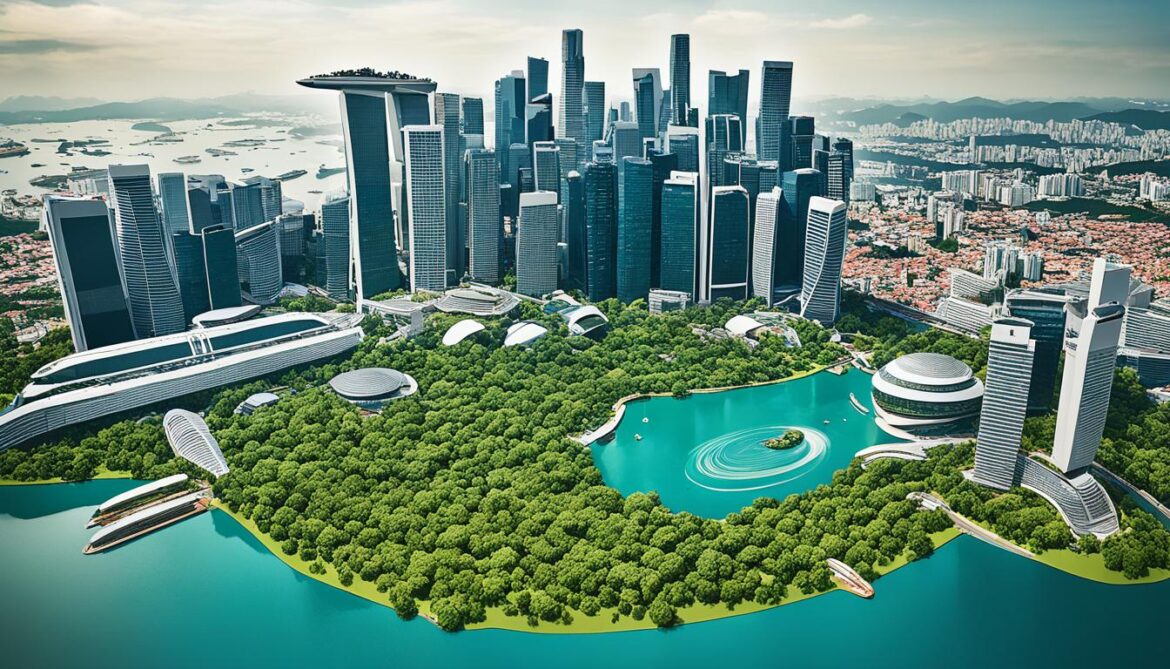
This image showcases the efforts made in Singapore to incorporate green spaces into its urban environment, promoting biodiversity conservation in the midst of rapid urbanization.
Urban Development and Biodiversity Loss
The conversion of forests to urban areas has resulted in a decline in biodiversity, as natural habitats are destroyed or fragmented. Species that rely on these habitats for survival and reproduction face increasing challenges to their survival.
The loss of natural habitats affects not only the flora and fauna but also the overall functioning of eco-systems. Urbanization disrupts the delicate balance of ecological processes and can lead to the loss of valuable ecosystem services.
Conservation Efforts within Urban Areas
Despite the challenges posed by urbanization, Singapore has implemented measures to preserve biodiversity within its urban areas. These measures include the creation of urban parks, green corridors, and the incorporation of nature into building designs.
Efforts to create more urban green spaces provide habitats for plants and animals and contribute to the connectivity between different green areas. These initiatives help to maintain ecological corridors and promote the movement and survival of diverse species within the urban environment.
Preserving Biodiversity for a Sustainable Future
“Conserving biodiversity within urban areas is not only essential for the well-being of the natural world but also for the livability and sustainability of cities.”
Table: Key Habitat Conservation Measures within Urban Areas
| Conservation Measure | Description |
|---|---|
| Park Connectors | Green corridors that connect parks and nature areas, providing pathways for diverse species and enhancing biodiversity in urban areas. |
| Green Roofs and Walls | The incorporation of vegetation on building roofs and walls, creating additional habitats for plants and animals and improving thermal comfort and air quality. |
| Biodiversity-Friendly Design | Designing buildings and infrastructure that consider biodiversity by incorporating bird-friendly features, native plant species, and sustainable drainage systems. |
| Community Gardens | Allocating spaces within urban areas for community-driven gardens, fostering environmental education and providing habitats for small animals, birds, and pollinators. |
The table above summarizes key habitat conservation measures within urban areas, highlighting the efforts made to preserve biodiversity and create sustainable urban environments in Singapore.
Despite the challenges posed by urbanization, Singapore continues to prioritize the conservation of biodiversity. By incorporating nature into urban spaces and implementing innovative conservation strategies, the country is striving to strike a balance between urban development and the preservation of its unique eco-systems.
The Role of Singapore’s Red List in Biodiversity Conservation
The Singapore Red List is a scientifically evaluated system that plays a crucial role in biodiversity conservation efforts. It helps determine the threat status of species, providing valuable information for conservation action, priority setting, and policy-making.
By identifying and documenting species in need of conservation, the Red List guides efforts to safeguard Singapore’s unique flora and fauna. It acts as an index, highlighting the decline of biodiversity and serving as a baseline for monitoring the status of species over time.
“The Singapore Red List serves as a vital tool in guiding conservation policies and strategies, enabling us to protect the most threatened species and prioritize our efforts effectively.”
Conservation priorities are established based on the Red List assessments, focusing resources and attention on species that are most at risk. This systematic approach ensures that conservation efforts are targeted and impactful, helping to prevent the loss of valuable biodiversity in Singapore.
The Red List also influences national and international policies related to biodiversity conservation. Its scientifically backed assessments provide evidence of the urgency to address threats and prompt action at various levels.
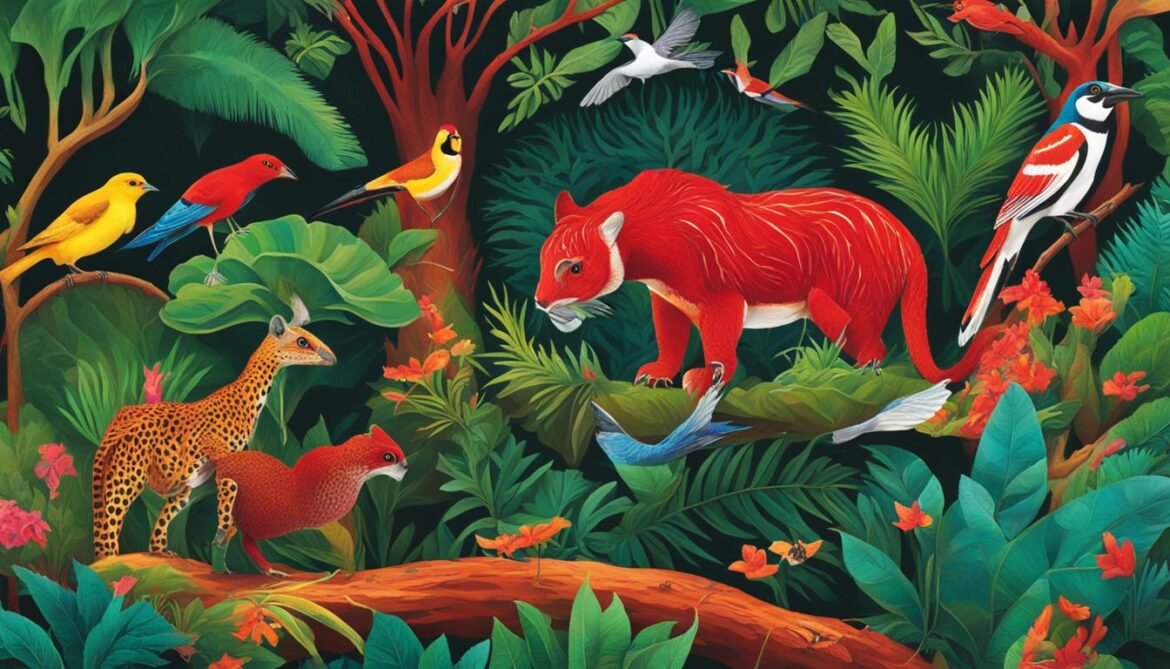
| Key Contributions of the Singapore Red List |
|---|
| Identification of threatened species |
| Establishment of conservation priorities |
| Guide for policy and decision-making |
| Baseline for monitoring species status |
| Influence on national and international policies |
The Singapore Red List is an invaluable tool for biodiversity conservation in Singapore, aiding in the protection of threatened species, shaping conservation strategies, and promoting the long-term sustainability of the nation’s rich natural heritage.
Extinction Rates and Conservation Outlook
A recent study estimates that Singapore has lost 37% of its species since the city’s construction began in 1819. This alarming statistic highlights the urgent need for wildlife conservation efforts in the country. The study utilizes observational data from various taxonomic groups to calculate extinction rates, shedding light on the severity of the situation.
If current rates of forest loss and degradation continue, the study predicts that by 2100, approximately 18% of all species in Southeast Asia could face extinction. This sobering projection emphasizes the critical importance of proactive conservation measures to prevent further biodiversity loss.
“The loss of species has far-reaching consequences for ecosystems and the planet as a whole. It is crucial that we take immediate action to preserve and protect our natural heritage.”
However, amidst these grim statistics, there is a glimmer of hope. The study finds that extinction rates in Singapore have begun to level off, suggesting that conservation efforts are yielding positive results. This positive outlook provides encouragement to continue and intensify wildlife conservation initiatives in the region.
By raising awareness, implementing sustainable practices, and engaging in collaborative efforts, we can work together to safeguard Singapore’s unique flora and fauna for future generations.

International and National Efforts for Biodiversity Conservation
Singapore actively participates in international and national initiatives to protect and preserve biodiversity. As a signatory to the Convention on Biological Diversity and the Convention on International Trade in Endangered Species of Wild Fauna and Flora, Singapore demonstrates its commitment to global conservation efforts.
At the national level, Singapore has implemented the National Biodiversity Strategy and Action Plan. This comprehensive plan aims to safeguard biodiversity through various measures, including habitat conservation, species protection, and ecosystem restoration.
“Conservation is not just about saving individual species; it is about maintaining the delicate balance of our natural ecosystems.”
One of the key objectives of the strategy is to improve knowledge and understanding of Singapore’s unique flora and fauna. Through research and monitoring programs, scientists and conservationists gather valuable data to inform conservation decisions and identify priority areas for protection.
In addition, Singapore places great emphasis on education and public awareness. By fostering a sense of environmental stewardship, the country encourages its citizens to actively engage in conservation efforts. Various educational programs and campaigns highlight the importance of biodiversity and the role each individual can play in its preservation.
“Sustainability begins with education. When we instill a love for nature and a sense of responsibility towards the environment, we pave the way for a greener and more sustainable future.”
Moreover, Singapore recognizes the significance of collaboration and partnerships in conservation. By working together with local communities, non-governmental organizations, and international stakeholders, Singapore promotes synergy and knowledge sharing for effective biodiversity conservation.
“Nature knows no borders. By joining hands in conservation, we can achieve greater impact and secure a harmonious environment for all.”
Through these combined efforts, Singapore endeavors to create a clean, green, and sustainable environment. The country’s dedication to international and national conservation initiatives reflects its commitment to safeguarding biodiversity for future generations.
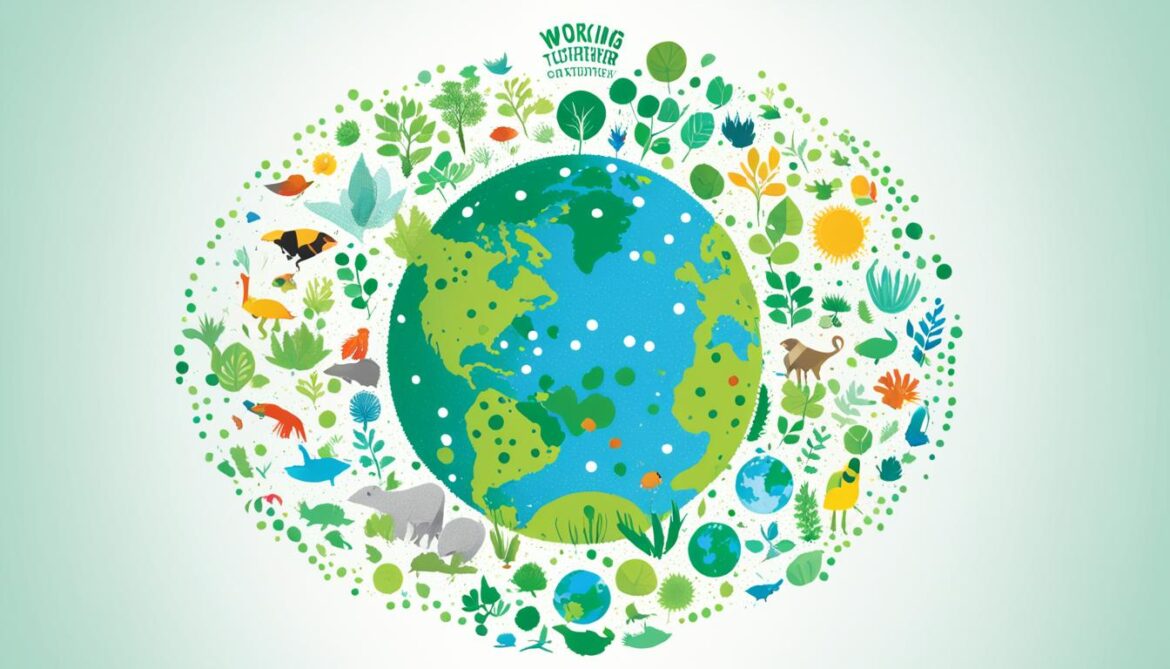
Future Challenges and Opportunities for Biodiversity Conservation in Singapore
As Singapore continues to make progress in biodiversity conservation, it also faces a set of future challenges that pose threats to its rich natural heritage. These challenges include urban development pressures, climate change, and the invasion of non-native species. To ensure the long-term conservation of Singapore’s biodiversity, it is crucial for future conservation efforts to address these challenges and emphasize sustainable development practices, habitat restoration, and the protection of key biodiversity areas.
Urban Development Pressures: With the rapid pace of urbanization in Singapore, natural habitats are increasingly being lost or fragmented. This habitat loss threatens the survival of numerous plant and animal species, leading to declines in biodiversity. To mitigate this challenge, conservation strategies need to integrate nature and green spaces into urban planning. By creating more terrestrial and aquatic habitats within built-up areas, we can provide refuge for native species and promote biodiversity in urban environments.
Climate Change: The effects of climate change, such as rising temperatures, sea-level rise, and extreme weather events, can have significant impacts on Singapore’s biodiversity. Species that are already adapted to the country’s tropical climate may face challenges in adapting to increasingly unpredictable environmental conditions. Conservation efforts should prioritize enhancing the resilience of ecosystems to climate change through measures like habitat restoration, targeted species conservation, and the implementation of climate adaptation plans.
Invasive Species: Invasive non-native species pose a major threat to Singapore’s native flora and fauna. These species, once introduced, can outcompete and disrupt the balance of ecosystems, leading to the decline or extinction of native species. To tackle this challenge, proactive measures are needed, such as early detection and rapid response programs, strict biosecurity measures, and public education on the importance of preventing the introduction and spread of invasive species.
Despite these challenges, there are also significant opportunities for biodiversity conservation in Singapore. Collaboration among government agencies, non-governmental organizations, and the public is crucial to implement effective conservation strategies. Innovative approaches, such as the integration of nature-based solutions into urban infrastructure and the use of technology for monitoring and research, can enhance conservation efforts. Public engagement and awareness initiatives play a vital role in fostering a sense of stewardship and promoting sustainable practices among individuals and communities.
Conservation Strategies for Singapore’s Future
To address the future challenges and take advantage of the opportunities, the following conservation strategies can be implemented:
- Implement sustainable development practices that prioritize the conservation of biodiversity and the preservation of natural habitats alongside urban growth.
- Restore habitats that have been degraded or lost to reverse the decline of native species and promote ecological resilience.
- Establish and protect key biodiversity areas, such as remaining primary forests and critical habitats, through effective legal frameworks and active management.
- Enhance research and monitoring efforts to better understand biodiversity patterns, assess threats, and inform evidence-based conservation decisions.
- Promote collaborations and partnerships among stakeholders to leverage collective expertise and resources in biodiversity conservation.
- Engage and educate the public, raising awareness about the value of biodiversity and encouraging sustainable behaviors and practices.
By implementing these conservation strategies and seizing opportunities for innovation and collaboration, Singapore can navigate the future challenges and achieve its vision of a sustainable and biodiverse urban environment.
Conservation Strategies for Future Biodiversity Conservation in Singapore
| Conservation Strategies | Description |
|---|---|
| Sustainable Development Practices | Prioritize biodiversity conservation alongside urban growth through sustainable development practices that minimize habitat loss and promote nature-based solutions. |
| Habitat Restoration | Restore degraded or lost habitats to reverse declines in native species and promote ecological resilience. |
| Protection of Key Biodiversity Areas | Establish and protect critical habitats and remaining primary forests through effective legal frameworks and active management. |
| Research and Monitoring | Enhance research and monitoring efforts to better understand biodiversity patterns, assess threats, and inform evidence-based conservation decisions. |
| Collaboration and Partnerships | Promote collaborations and partnerships among stakeholders to leverage collective expertise and resources in biodiversity conservation. |
| Public Engagement and Education | Engage and educate the public, raising awareness about the value of biodiversity and encouraging sustainable behaviors and practices. |
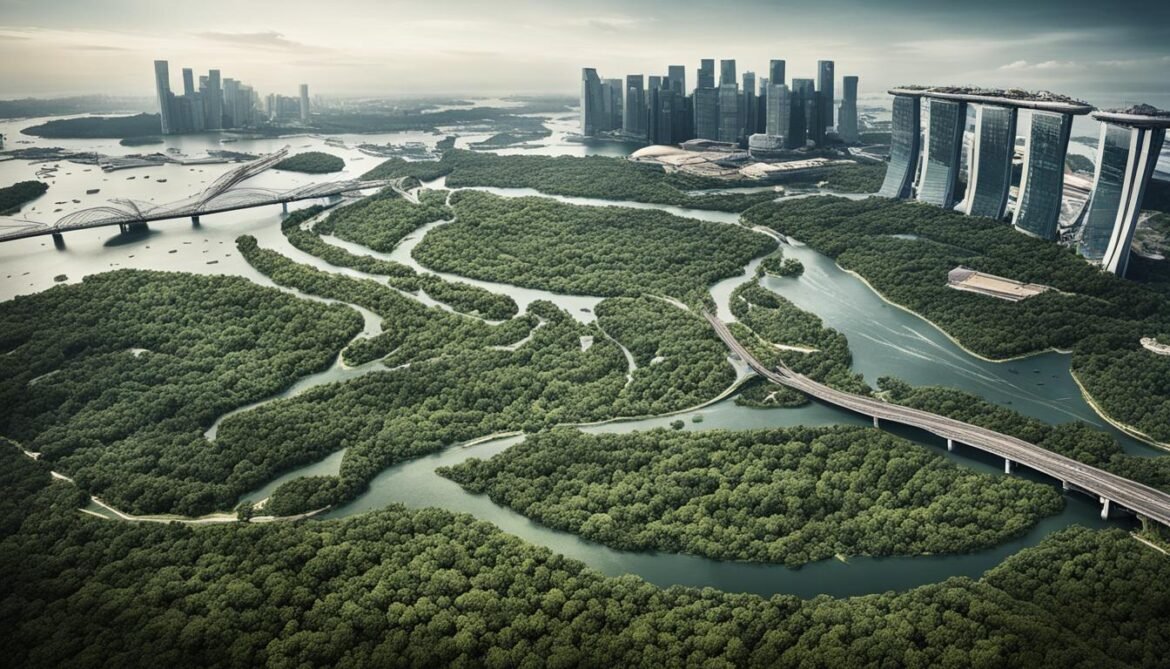
Promoting Environmental Sustainability
Singapore has prioritized environmental sustainability through various initiatives, demonstrating its commitment to protecting the country’s unique biodiversity and ensuring a harmonious balance with urban development.
One key initiative is the increase in green cover, which has significantly enhanced Singapore’s natural landscape. The government has actively promoted the planting of trees and the creation of green spaces, not only for aesthetic purposes but also to provide crucial habitats for native flora and fauna. This green infrastructure contributes to the overall well-being of Singapore’s ecosystem and helps mitigate the effects of climate change.
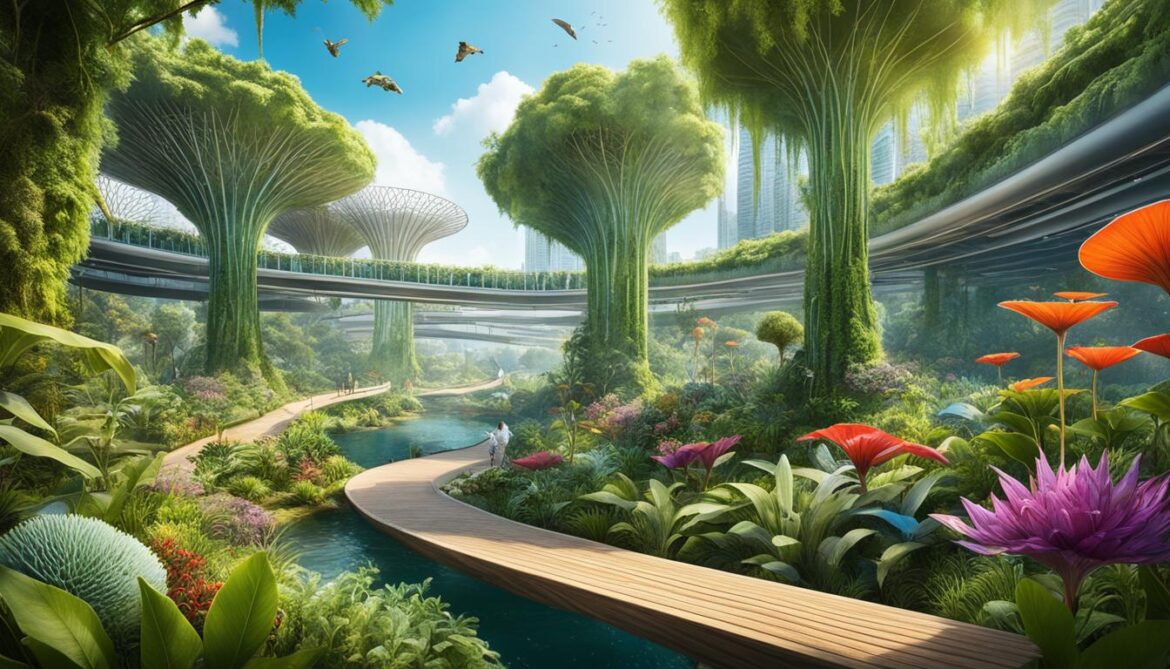
In addition to increasing green cover, Singapore has prioritized water management as part of its sustainable practices. The country has implemented innovative technologies and strategies to efficiently collect, treat, and reuse water, reducing reliance on imported water sources. These efforts ensure the conservation of this precious resource while promoting environmental sustainability.
Furthermore, Singapore has integrated nature into urban infrastructure, creating a seamless connection between city living and the natural environment. By incorporating green spaces, such as parks, gardens, and rooftop gardens, into the urban landscape, Singapore encourages residents to engage with nature and appreciate its value. This integration also provides additional habitats for wildlife, contributing to the conservation of biodiversity within urban areas.
“Our commitment to environmental sustainability goes beyond government efforts. Various organizations in Singapore actively promote sustainable practices and conservation education to raise awareness about the importance of biodiversity. Together, we work toward a greener and more sustainable future.”
– Singapore Environmental Agency
The promotion of sustainable practices extends beyond physical conservation efforts. Singapore emphasizes the importance of education and awareness in environmental sustainability. Through school programs, public campaigns, and community initiatives, Singapore ensures that individuals understand their role in protecting the environment and actively participate in conservation initiatives.
By prioritizing environmental sustainability, Singapore showcases its dedication to responsible and balanced development. The country’s efforts serve as a model for other nations, demonstrating that economic growth and conservation can coexist harmoniously, ultimately ensuring a sustainable future for generations to come.
Conclusion
Singapore’s rich biodiversity is a precious natural asset that is safeguarded through the establishment of nature reserves and dedicated conservation efforts. Despite facing significant challenges from urbanization, Singapore has made strides in stabilizing extinction rates and bringing back locally extinct species. To ensure the long-term protection of Singapore’s unique flora and fauna, it is crucial to continue prioritizing biodiversity conservation, implementing sustainable practices, and raising public awareness.
By preserving and enhancing the country’s biodiversity, Singapore not only protects its natural heritage but also contributes to the overall global conservation efforts. The establishment of nature reserves and the adoption of sustainable practices play a pivotal role in maintaining the delicate balance between urban development and the preservation of precious ecosystems. As Singapore moves forward, it is imperative to continue investing in conservation initiatives and fostering a sense of environmental stewardship among its citizens.
Conservation efforts should focus on habitat restoration, the protection of key biodiversity areas, and innovative strategies to mitigate the impacts of climate change and invasive species. Engaging the public through education and awareness programs will also be instrumental in fostering a culture of environmental sustainability. By working collaboratively and embracing sustainable practices, Singapore can secure a future where its diverse flora and fauna thrive alongside its urban landscape.



